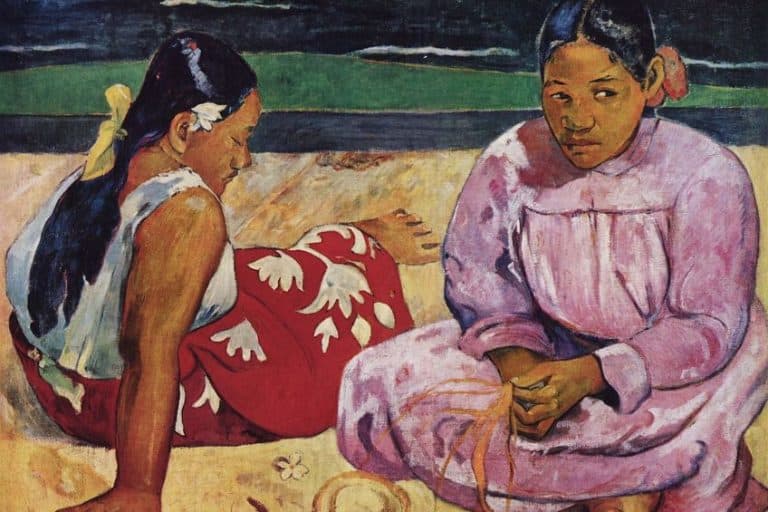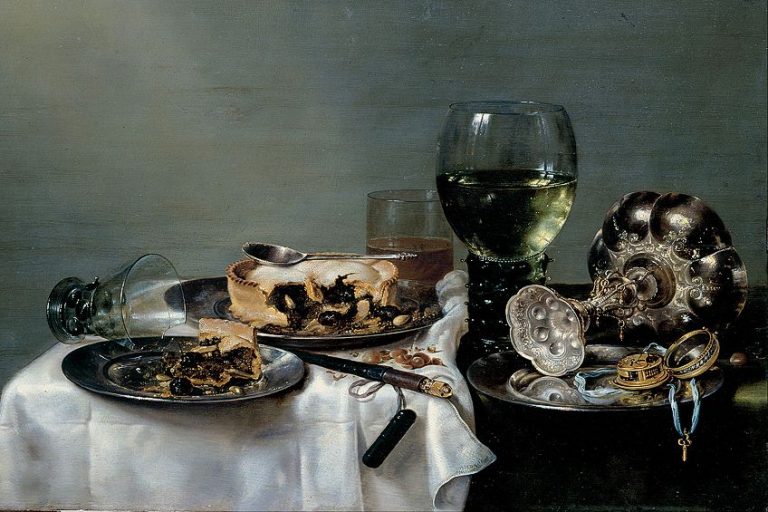1980s Art – Exploring the Electric Aesthetics of 1980s Art
Welcome to the vibrant and electrifying world of 1980s art, where neon hues danced alongside bold brushstrokes, and creativity knew no bounds. The 1980s marked a period of unparalleled innovation and expression in the art world, as artists embraced new mediums, challenged conventional norms, and reflected the dynamic spirit of the times. From the graffiti-splashed streets of New York City to the sleek galleries of Paris, join us on a journey through this exhilarating era where pop culture collided with high art, and artists became the rockstars of their generation. Get ready to immerse yourself in a kaleidoscope of colors, shapes, and ideas that defined one of the most iconic decades in art history!
Key Takeaways
- The 1980s art scene was characterized by a divergence from minimalism, embracing bold and diverse artistic expressions.
- Artists of the 1980s often used their work to explore and critique prevailing cultural and societal issues.
- Advancements in media and techniques during this time influenced both the creation and distribution of artwork.
Overview of the 1980s Art Scene
The art world of the 1980s reflected a period of eclectic expressions, where paintings, sculpture, and other forms gained remarkable traction. Artists, exploring fresh dimensions of visual culture, began to push against the austere bounds of conceptualism that had dominated the previous decade. In painting, a resurgence of expressionism suggested a renewed focus on personal identity and emotional intensity. Graffiti and street art, burgeoning from city walls, played with postmodern concepts, challenging traditional gallery spaces and bringing art directly to the public.

The decade saw the use of mixed media and installation view artworks grow in popularity, adding dimension to the already dynamic art market. Photography, too, achieved mainstream acceptance, with photographs being embraced not only as documentary tools but as legitimate and powerful pieces of fine art.
Galleries began to host a plethora of styles, underscoring the decade’s diversity in both medium and message. The art was often interwoven with the media, amplifying its impact and reach. Artists harnessed the power of print and televised media to comment on and engage with broader social narratives. Sculpture during the 1980s expanded from static forms to include interactive experiences, further broadening the modalities of what art could be.
This period of rich creativity and boundary-pushing would decisively shape the artistic practices moving forward well into future decades.
Influential Movements
The 1980s art scene was typified by a tapestry of bold styles, cultural critique, and a reinvention of artistic methods. This section will explore some of the pivotal artists and movements that shaped the decade’s visual narrative.
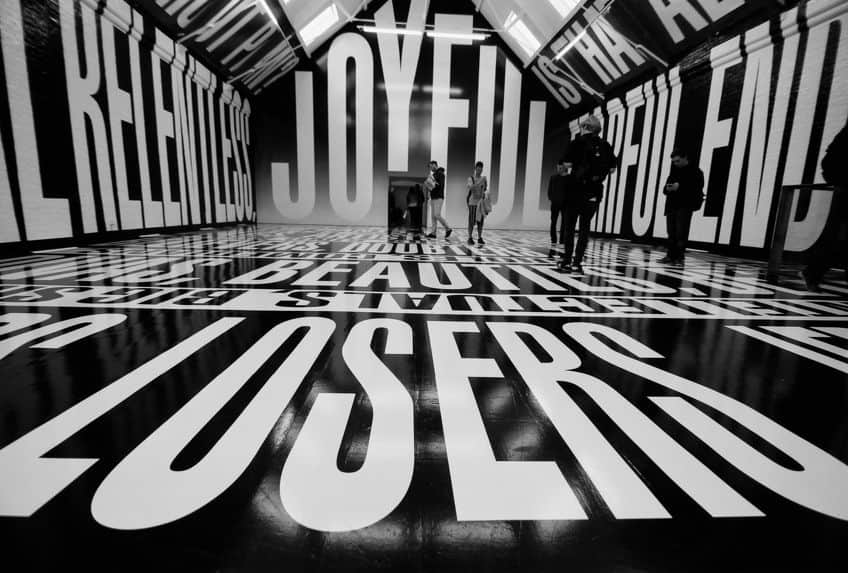
Jean-Michel Basquiat and Neo-Expressionism
Jean-Michel Basquiat, a prominent figure in the Neo-Expressionist movement, rose to prominence with his raw, visceral imagery and profound social commentary, exploring themes of identity, race, and class through his work often layered with graffiti. Among his notable pieces stands Red Room (1988), a testament to his bold and evocative style.
Basquiat’s contemporaries, including Anselm Kiefer and Julian Schnabel, further enriched the artistic landscape of the era, contributing to the dynamic discourse and exploration within the art world.
The Pictures Generation
The Pictures Generation, comprising artists such as Cindy Sherman and Richard Prince, employed appropriation as a means to deconstruct the ubiquitous impact of mass media. Through the mediums of photography and conceptual art, they delved into the examination and subversion of cultural stereotypes, offering poignant critiques of contemporary society. Alongside Sherman and Prince, notable figures within this movement include Barbara Kruger, Sherrie Levine, and Louise Lawler, each contributing unique perspectives and approaches to the collective dialogue surrounding the intersection of art and mass culture.

Keith Haring and Street Art
Keith Haring revolutionized the art world by elevating street art from the subways of New York to the prestigious galleries of fine art, infusing his creations with dynamic lines and socially relevant themes. Through his iconic motifs, Haring connected with a broad audience, effectively democratizing the experience of art and making it accessible to all.
His characteristic style, defined by bold lines, vivid colors, and universally understandable imagery, continues to inspire and resonate with audiences worldwide, cementing his legacy as a pioneer of contemporary art.
Pop Art’s Continuation and Critique
Pop Art maintained its relevance well into the 1980s, as exemplified by artists like Jeff Koons and Julia Wachtel who both critiqued and expanded upon the legacies established by earlier pop artists like Andy Warhol. Their exploration focused on the blurred lines between high art and commercialism, challenging conventional notions of artistic value and consumer culture. Notable among Koons’s contributions is his iconic sculpture Rabbit (1986), which not only encapsulates the essence of Pop Art but also serves as a pivotal commentary on the nature of contemporary art and its relationship to mass production and consumption.
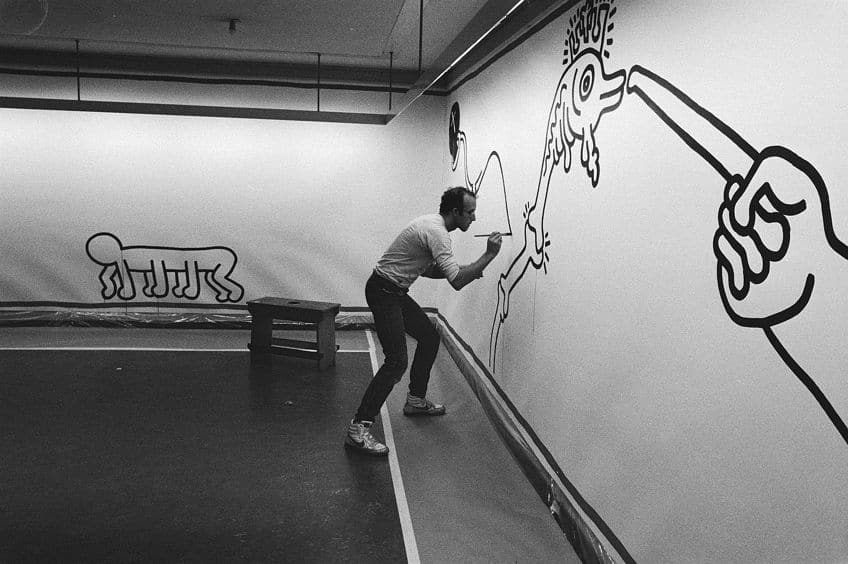
Conceptual and Minimalist Approaches
During a period marked by emotionally charged styles, certain artists veered towards the exploration of Minimalism and Conceptual Art, diverging from the prevailing trends. Within these forms, emphasis was placed on the conceptual underpinnings of the art, with the ideas taking precedence over the physical manifestation of the work. Distinguished figures like Jenny Holzer epitomized this approach, as their artistic endeavors centered around intellectual rigor and the deployment of simplified forms to convey profound messages.
This commitment to abstraction and intellectual exploration defined the essence of Minimalism and Conceptual Art during this era, leaving an indelible mark on the landscape of contemporary artistic expression.
Appropriation Art
Appropriation Art emerged as a prominent movement, commanding attention with artists such as Sherrie Levine and Richard Prince leading the charge by recontextualizing existing images and objects to interrogate concepts of originality and authorship. Through their innovative approaches, they provoked discourse on the very nature of art, challenging traditional notions of creativity and ownership. Levine’s rephotographs and Prince’s “rephotographs” stand as influential works within this paradigm, serving as poignant examples of how the act of appropriation can serve as a powerful tool for critique and commentary within the contemporary art world.

Notable Artists of the 1980s
The 1980s witnessed the emergence of a diverse array of influential artists whose contributions reshaped the landscape of contemporary art. From Jean-Michel Basquiat’s raw, graffiti-inspired works to Cindy Sherman’s groundbreaking photographic explorations of identity, these artists challenged conventions and pioneered new forms of expression that continue to resonate today.
Some influential artists include:
- Anselm Kiefer (1945 – Present): Kiefer’s monumental, enigmatic works addressed themes of memory, history, and identity, reflecting the tumultuous political and cultural climate of the 1980s.
- Barbara Kruger (1945 – Present): Kruger’s bold, graphic compositions and incisive slogans challenged viewers to confront issues of consumerism, feminism, and identity politics in 1980s America.
- Jenny Holzer (1950 – Present): Holzer’s provocative use of text in public spaces and installations sparked critical dialogue on issues of power, gender, and societal norms during the 1980s.
- Julian Schnabel (1951 – Present): Schnabel’s bold, expressive paintings and unconventional use of materials helped redefine the boundaries of contemporary art, contributing to the resurgence of painting in the 1980s.
- David Wojnarowicz (1954 – 1992): Through his multidisciplinary practice, Wojnarowicz fearlessly addressed themes of AIDS activism, queer identity, and social injustice, becoming a powerful voice for marginalized communities in the 1980s art scene.
- Cindy Sherman (1954 – Present): Through her groundbreaking photographic series, Sherman challenged conventional notions of identity and representation, pioneering new forms of self-portraiture and feminist art.
- Jeff Koons (1955 – Present): Renowned for his kitsch-inspired sculptures and appropriation of consumer culture imagery, Koons challenged notions of taste and value, reshaping the landscape of contemporary art.
- Keith Haring (1958 – 1990): Haring’s vibrant, energetic style and iconic motifs became synonymous with the spirit of 1980s New York City, as he utilized his art as a tool for activism and social change.
- Jean-Michel Basquiat (1960 – 1988): Known for his raw, graffiti-inspired works, Basquiat explored themes of race, identity, and social commentary, leaving an indelible mark on the art scene of the 1980s.
- Jenny Saville (1970 – Present): Saville’s powerful and visceral paintings of the human body challenged traditional standards of beauty and representation, offering a raw and unflinching commentary on the female form in 1980s art.
Art and Society
In the 1980s, art became a critical mirror reflecting society’s issues and cultural shifts. This section examines how art engaged with social phenomena, from the impact of the AIDS epidemic to the commoditization of art itself.
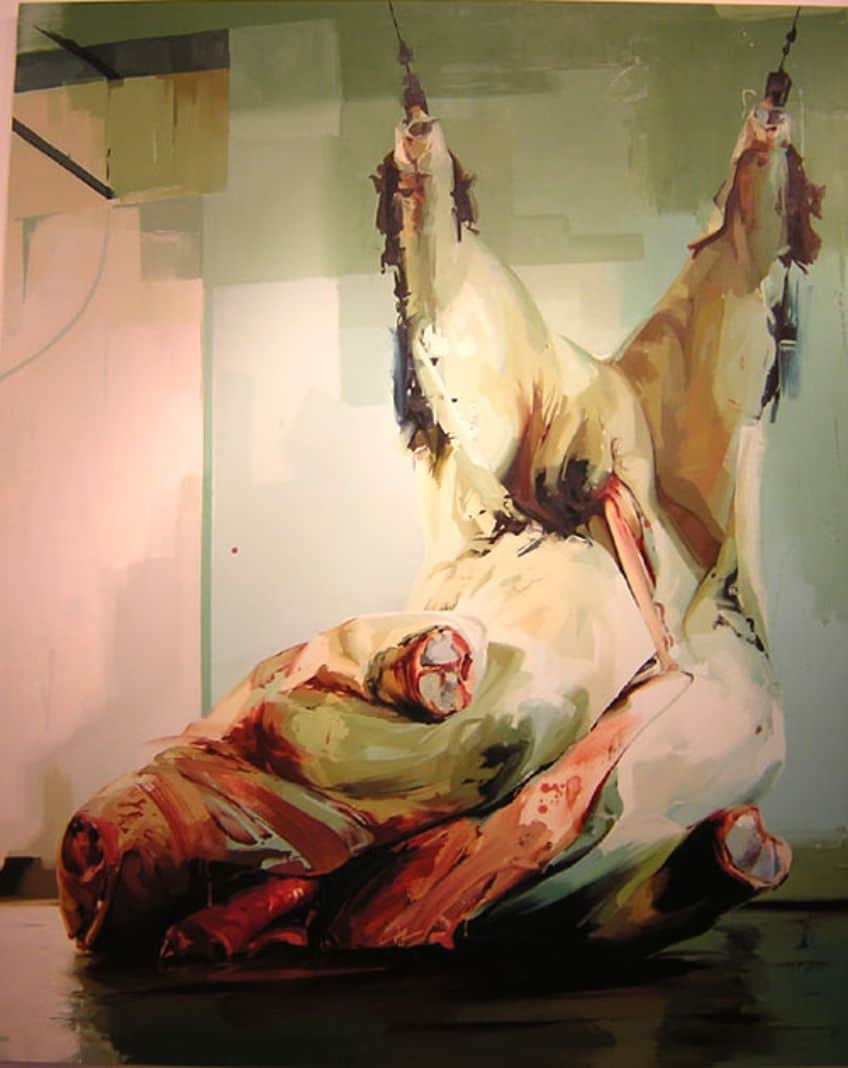
AIDS Epidemic Impact
The AIDS crisis drastically affected the art community, becoming a focal point for activism and artistic expression. Keith Haring, an artist and activist, infused his work with social commentary on the epidemic.
Groups like Gran Fury and organizations such as ACT UP used art to raise awareness, creating provocative pieces that combined political urgency with the personal toll of the disease.
Political and Social Commentary
Artists like Jean-Michel Basquiat employed their canvases for commentary, addressing power structures and deep-seated societal issues. The era was marked by culture wars, with artists often challenging the status quo and sparking discussions on topics ranging from capitalism to sexuality through various media—from paintings to performance art.
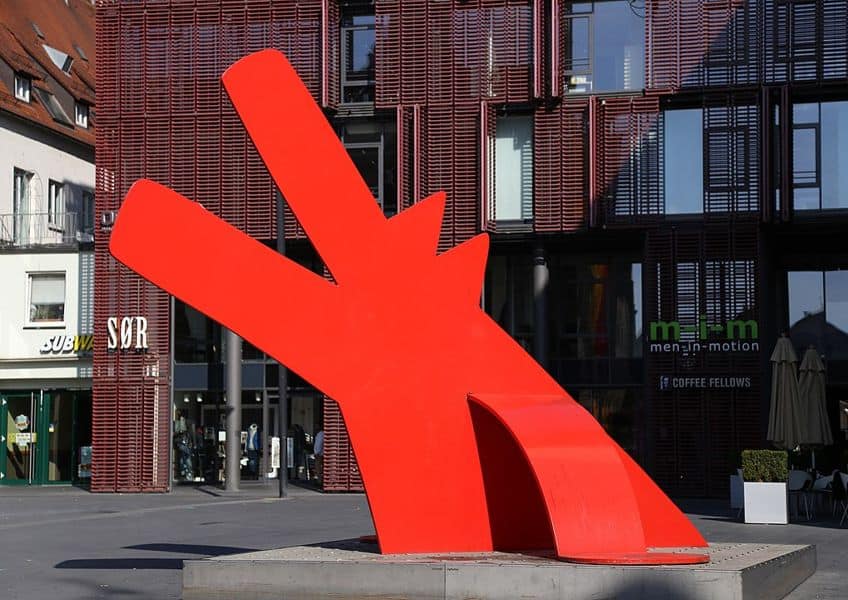
Art as Commodity
During the 1980s, the art market experienced significant growth, with neo-expressionism and postmodernism leading the charge. The decade saw art intertwined with capitalism and consumption, illustrated by works like Barbara Kruger’s Untitled (I shop therefore I am).
Art became a coveted commodity for collectors and was subject to branding and commodification, mirroring the decade’s consumerist ethos.
Cultural Transformation
The transformation of culture in the 1980s led artists to explore and integrate advertising and mass media into their work. Washington, D.C., and Times Square became backdrops for artists reckoning with and reflecting societal changes. As the general public became more engaged with art, the line between advertising and artistic expression often blurred, with artworks being both a product of and a response to the consumer culture of the time.

Technical Innovations and Media
The 1980s art scene was marked by the enthusiastic adoption of new media and technologies, which expanded the boundaries and expression of artwork. Significant advancements in photography were met with the burgeoning prominence of video and mixed media.
This aligns art more closely with mass media and popular culture.
Photography’s Rise in the Art World
Photography assumed a new prominence in the 1980s, becoming a critical medium for artists like Cindy Sherman and Nan Goldin. Their photographs ranged from Sherman’s staged, cinematic tableaux that questioned identity and representation, to Goldin’s intimate snapshots capturing personal and candid moments.

Expansion of Installation Art
Installation art emerged powerfully in the ’80s, offering new approaches to materials and scale. Artists such as Julian Schnabel utilized unconventional materials like broken crockery, while Ross Bleckner and Gretchen Bender redefined space and perception through their expansive installations, which often incorporated mixed media elements. Artists during this period were not afraid to experiment with varied materials and monumental scales.
Ashley Bickerton and Allan McCollum showcased a diverse array of materials, from the industrial to the organic, creating works that challenged traditional notions of art by pushing the boundaries of size and form.
Influence of Mass Media and Popular Culture on Art
Mass media’s impact on the decade’s art was unmistakable. Artists reflected on the pervasive influence of television, advertising, and film, critiquing and appropriating their imagery. David Salle’s layered compositions reference the overwhelming influx of media images, while exhibitions like “Brand New: Art and Commodity in the 1980s” highlighted artists’ responses to consumer and media cultures.

The ’80s art world saw a fusion with popular culture, wherein the lines between high art and kitsch blurred. References to pop culture were evident in the works of artists like Julian Schnabel, known for his “plate paintings,” and in the embrace of commercially saturated colors and motifs inspired by the zeitgeist, as seen in the lush tones of Blue Velvet and other pop culture elements which were often described as kitsch during the era.
As we bid farewell to the kaleidoscopic world of 1980s art, one thing remains abundantly clear: its enduring legacy continues to inspire and captivate audiences across the globe. From the neon-lit canvases of the urban streets to the galleries adorned with provocative installations, the art of the 1980s remains a testament to the boundless creativity and fearless exploration of its time. As we reflect on the era’s bold experimentation and cultural resonance, we are reminded that the spirit of the 1980s lives on—a vibrant tapestry woven with innovation, expression, and the relentless pursuit of artistic freedom. As we step back into the present, let us carry forward the electrifying energy and unbridled passion that defined one of the most iconic decades in art history.
Frequently Asked Questions
Who Were the Most Influential Artists of the 1980s?
The 1980s art scene was dominated by figures like Jean-Michel Basquiat, whose graffiti-inspired work challenged traditional boundaries. Andy Warhol continued to be a seminal force, while Keith Haring gained recognition for his public works that carried social messages.
What Distinct Art Movements Emerged During the 1980s?
During the 1980s, Neo-Expressionism emerged, characterized by intense colors and dynamic compositions, with artists like Julian Schnabel at the forefront. The Pictures Generation, influenced by the advent of mass media, saw artists like Cindy Sherman using photography to challenge cultural stereotypes.
How Did 1980s Art Respond to the Political and Social Climate of the Time?
Art in the 1980s often reflected the era’s political and social tensions, including responses to the AIDS crisis, Reaganomics, and the Cold War. Artists like Barbara Kruger and the group Gran Fury used their works as platforms for activism and commentary, blending art with political discourse.
Isabella studied at the University of Cape Town in South Africa and graduated with a Bachelor of Arts majoring in English Literature & Language and Psychology. Throughout her undergraduate years, she took Art History as an additional subject and absolutely loved it. Building on from her art history knowledge that began in high school, art has always been a particular area of fascination for her. From learning about artworks previously unknown to her, or sharpening her existing understanding of specific works, the ability to continue learning within this interesting sphere excites her greatly.
Her focal points of interest in art history encompass profiling specific artists and art movements, as it is these areas where she is able to really dig deep into the rich narrative of the art world. Additionally, she particularly enjoys exploring the different artistic styles of the 20th century, as well as the important impact that female artists have had on the development of art history.
Learn more about Isabella Meyer and the Art in Context Team.
Cite this Article
Isabella, Meyer, “1980s Art – Exploring the Electric Aesthetics of 1980s Art.” Art in Context. February 21, 2024. URL: https://artincontext.org/1980s-art/
Meyer, I. (2024, 21 February). 1980s Art – Exploring the Electric Aesthetics of 1980s Art. Art in Context. https://artincontext.org/1980s-art/
Meyer, Isabella. “1980s Art – Exploring the Electric Aesthetics of 1980s Art.” Art in Context, February 21, 2024. https://artincontext.org/1980s-art/.





